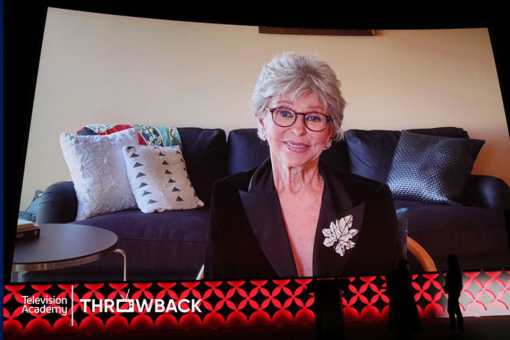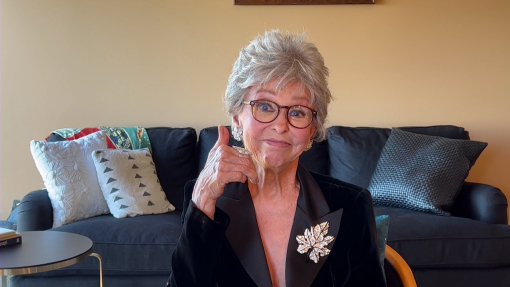Long before he became a phenomenon in television, Walt Disney was a pioneer in the movies.
Disney, a Chicago-born cartoonist, arrived in Hollywood in 1923 believing he could turn himself into an animator. By March 1924, the young animator’s first cartoon short had reached the theaters.
Walt also believed that sound could be added to movie cartoons. He made it happen in 1929 with a cartoon short entitled Steamboat Willie, Mickey Mouse’s second movie. Walt believed that color could raise cartoons to new levels of creativity. Experimenting with it over and over, he eventually created it in 1932 with Flowers and Trees, the first Technicolor cartoon. Later, he believed that cartoon shorts could be extended to full-length features. And searching for an appropriate story, he turned his dream into a crusade against all odds and produced Snow White and the Seven Dwarfs in 1937.
Later, much later, in the early 1950s, Disney turned another of his impossible dreams into a crusade. He wanted to build an amusement park that would be unlike any other amusement park in the world. He wanted a place that would be “something of a fair, an exhibition, a playground, a community center, a museum of living facts, and a showplace of beauty and magic.”
No one else, however, believed in Disney’s dream. Certainly not his brother Roy, the Disney studio’s business manager who thought an amusement park was a harebrained idea. Certainly not the banks, which were not used to underwriting such schemes.
Disney had begun to despair of ever finding an angle when suddenly he came upon the solution following a sleepless night.
“Television!” he said to Roy. “That’s how we’ll finance the park - television.”
Roy believed that his brother was making sense at last.
The plan: a television network would invest in the amusement park, and Disney, in turn, would produce a show for that network.
Armed with a sheath of drawings and a description of the park, Roy flew to New York to convince a network to finance his brother’s proposal.
CBS wasn’t interested at all and showed Roy to the door. RCA’s David Sarnoff was fascinated, but each time Roy dealt with Sarnoff’s subordinates at NBC he hit a stonewall of resistance. Finally, ABC, which had long sought a television series from Disney, took up the gauntlet.
In his hotel room following a fruitless series of meetings at NBC, Roy telephoned Leonard Goldenson, president of ABC:
“Leonard, a couple of years ago you expressed an interest in working out something with us in television,” Roy began. “Are you still interested?”
“Roy, where are you?” asked Goldenson. Roy named the hotel, to which Goldenson replied, “I’ll be right over.”
Roy’s deal with ABC stipulated that Disney studios would supply a one-hour television series to the network in return for a $500,000 investment in Disneyland park. ABC, which would also pay $50,000 per program, would own 35 percent of Disneyland and would guarantee loans up to $4.5 million. Thus, Disney received the cash and credit line for the amusement park, while ABC, the youngest and most vulnerable of the networks, was able to telecast a show that would enhance its effort to be taken seriously.
Disneyland, the show, was ABC’s first major hit series. Moreover, it marked the first time a major Hollywood movie studio ventured into television production. The other studios were frightened by the new medium’s real threat to box-office receipts. Uncle Miltie was taking America away from the movies on Tuesday nights, as was Jackie Gleason on Saturday nights and Ed Sullivan on Sunday nights. The result was that the movie studios refused to produce programing for television. They also denied the new medium use of their best theatrical films.
Disney, however, helped to change all of that. With Disney in the enemy’s camp, the studios began to realize that television was not going to disappear. And, increasingly, they turned to producing their own TV series.
In the meantime, the show that would become television’s longest-running and most honored prime-time series — Disneyland — had hit the airwaves on Wednesday, October 27, 1954, at 7:30 p.m.
The show, hosted by Walt Disney, made use of documentaries, action adventures, cartoons, and nature stories.
Popular from the beginning, the show galloped into the stratosphere when Disney introduced Davy Crockett as a three-part series on the Frontierland segment. An associate had recommended that Disney cast James Arness in the role of Crockett. To study the actor, Disney screened an Arness movie entitled Them! in which the actor battled giant ants. “That’s Davy Crockett,” Disney shouted as he looked at the screen. Disney had forgotten Arness. He was looking at Fess Parker, an unknown actor who also had a role in Them!
With Parker in the title role, the adventures of Davy Crockett, American frontiersman of the early 1800s, produced electronic lightning. Davy Crockett, Indian Fighter was telecast on December 15, 1954, followed by Davy Crockett Goes to Congress on January 26, 1955, and Davy Crockett at the Alamo on February 23, 1955.
Parker became an overnight sensation. The theme song, The Ballad of Davy Crockett, which Disney had commissioned to bridge the action in the edited footage of the series, became one of the biggest hits of the mid-1950s. And the term merchandising suddenly became identified with megabucks — and with the ubiquitous coonskin.
“Before the boom ended the following summer, $100 million worth [of coonskin hats] had been marketed, not to mention Davy Crockett sweat shirts, sleds, blankets, snowsuits, toothbrushes, school lunch boxes, swing sets, playhouses, sandboxes, stools, toy guns, and bicycles” — this from respected historian William Manchester, who felt compelled to devote half a page of his contemporary history, The Glory and the Dream, to the Davy Crockett fad that swept across America like prairie fire.
Davy Crockett, it was obvious after the smoke had cleared, had also pioneered the multipart telecast that evolved into the miniseries of today.
Because the strength of Disneyland’s anthology series resided in its variety, the show went beyond Frontierland to adaptations of such classics as The Legend of Sleepy Hollow (narrated by Bing Crosby), Treasure Island, Alice in Wonderland, and Babes in Toyland (starring Ray Bolger, Annette Funicello, and Tommy Sands).
But the “Tomorrowland” segments, as author John Culhane once suggested, were perhaps the most significant to us as Americans. Man in Space, directed in 1954 by the great Disney animator Ward Kimball, explained the principles of rocketry, especially the three-stage rocket designed to send a space shuttle into orbit. The program was so effective that President Eisenhower phoned Disney the following day to congratulate him and request a print to show his Pentagon generals. Forty-five days later, the president announced that the United States would launch a space program.
Other segments in the “Tomorrowland” segments included Man and the Moon in the show’s second year, 14 years before America actually landed a team on the moon; Our Friend the Atom, on nuclear power, during the third season; and Mars and Beyond, in the fourth.
When the series moved to NBC in 1961, the show helped pioneer the use of color, spur the sales of color televisions, and hasten the standardization of color in television broadcasting.
By that time, Disneyland’s name had been changed to Walt Disney Presents (1958) and then to Walt Disney’s Wonderful World of Color (1961). It would subsequently be changed three more times. Changes in its name, however, hardly mattered to the public, which remained loyal to the show during its long-distance run of 29 years. NBC canceled the show in 1981, but CBS picked it up, kept it for two years, and axed it in 1983. It had averaged a highly respectable 22.5 rating/36 share and won seven Emmys, and it eventually spun off the Disney Channel.
Walt Disney, artist and impresario whom President Lyndon B. Johnson said “carved an American folklore,” died on December 15, 1966. His show carried on 17 years after his passing.
This tribute originally appeared in the Television Academy Hall of Fame program celebrating Walt Disney's induction in 1986.










